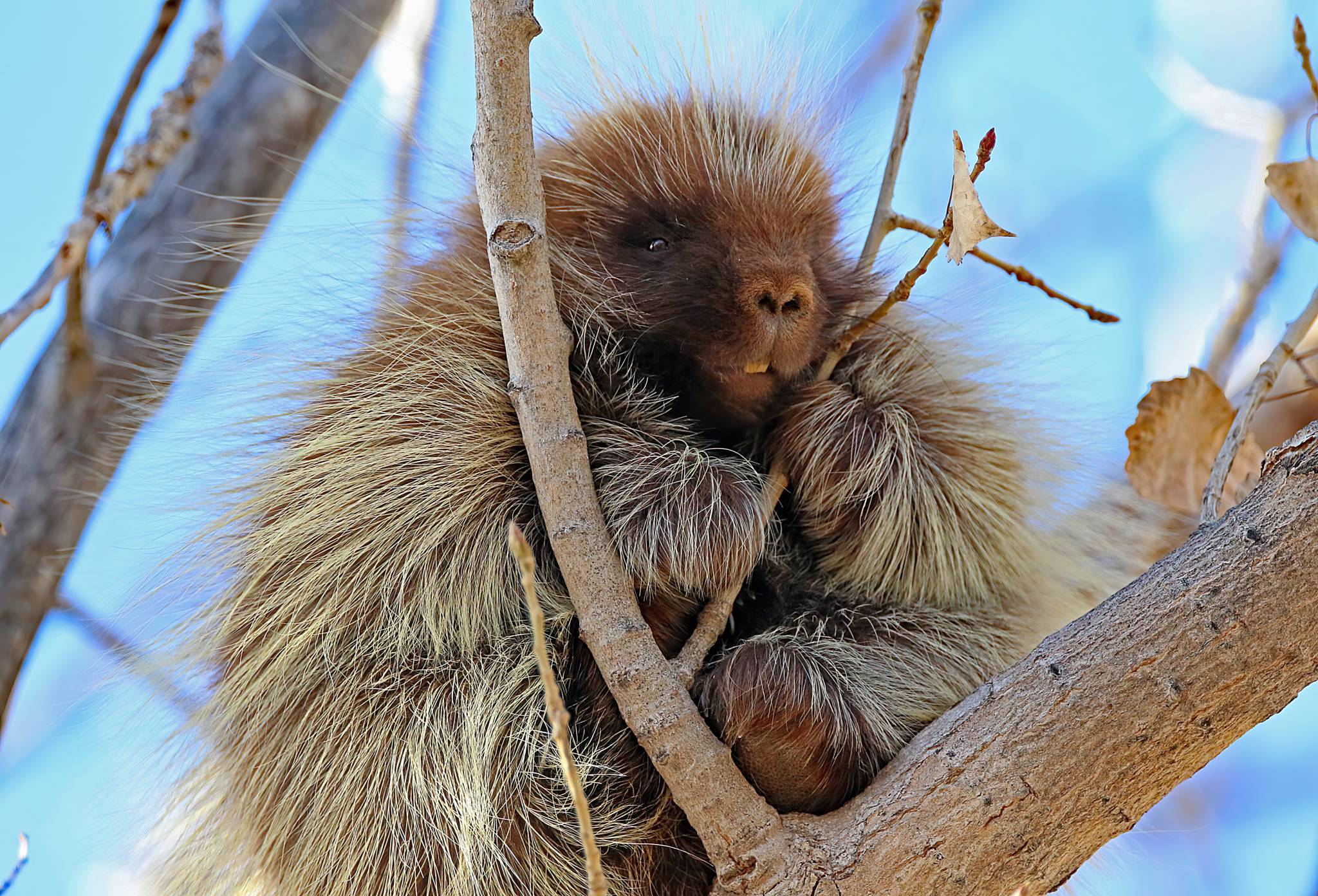DWR News Release
VERNAL — Winter is a great time to view one of the state’s largest rodents — the porcupine! If you have never seen these hardy forest dwellers in the wild, the Utah Division of Wildlife Resources is partnering with the Ouray National Wildlife Refuge to host a viewing event to give you that opportunity.
Though they are mostly nocturnal, porcupines can often be seen during the day throughout the winter. They are primarily found in Utah’s river bottoms, feasting on tree bark, needles and dried berries, while soaking up the winter sunshine. They are more visible during the winter months because the leaves that typically hide them are absent from the trees.
Porcupines are mostly solitary mammals and prefer to live in areas with wetlands, deciduous and alpine forests, and shrubland, but can also be found in desert habitats. An adult porcupine’s average weight is 9-13 pounds, and they can live to be almost 20 years old — though in the wild, it’s more common for them to live to 5-7 years.These animals are also very vocal, producing a variety of sounds and whimpers.
Porcupines are easily identified by their spiky fur coat that is made up of long guard hairs and over 300,000 sharp, hollow quills. These quills are a defense mechanism for the animal — although contrary to popular belief, porcupines cannot shoot their quills from their body. When attacked by a predator, the porcupine will “slap” its tail toward danger, and the quills are embedded in the flesh of its attacker. The quills are equipped with microscopic barbs that make them very difficult to pull out once they are lodged in. Porcupines also have sharp, barb-like hairs on the underside of their body that help them climb.
“We’ve never hosted a wildlife viewing event for porcupines before, and I think it will be quite memorable for those that attend,” DWR Northeastern Region Conservation Outreach Manager Tonya Kieffer-Selby said. “Someone once referred to them as a ‘Rocky Mountain sloth,’ and that description has forever stuck with me. Porcupines are not the typical wildlife species that we highlight, but we see quite a few in the northeastern part of the state during the winter. I have grown to adore and appreciate porcupines and look forward to sharing a truly unique experience with our participants.
Details for the event
The viewing event will take place on Saturday, March 16 from 9 a.m. to noon at the Ouray National Wildlife Refuge, located at 19001 Wildlife Refuge Road in Randlett, Uintah County. The refuge is located about 35 miles southwest of Vernal. As with the other wildlife viewing events, DWR and Refuge biologists will be available to answer questions and to help participants spot porcupines in the area. Spotting scopes and binoculars will be available for use, but you should bring your own if you have them. Bathroom facilities will be open at the refuge during the event.
To reach the site, travel on U.S. Highway 191 about 14 miles west of Vernal or about 13 miles east of Roosevelt, and turn south on State Route 88. Travel south on SR-88 for 14 miles, and then turn left into the refuge entrance. The refuge headquarters is located 1 mile down the entrance road.
While the event is free, participants are encouraged to register in advance on Eventbrite.
For the safety of the porcupines, attendees are asked to not bring their dogs or any other pets to the refuge during the viewing event. Porcupines are typically non-aggressive but will defend themselves if they feel threatened. Unfortunately, the first time many people see evidence of a porcupine is when their dog returns with a face full of quills. If you or your dog ever encounter being struck by a porcupine, you should immediately seek medical or veterinary assistance.

